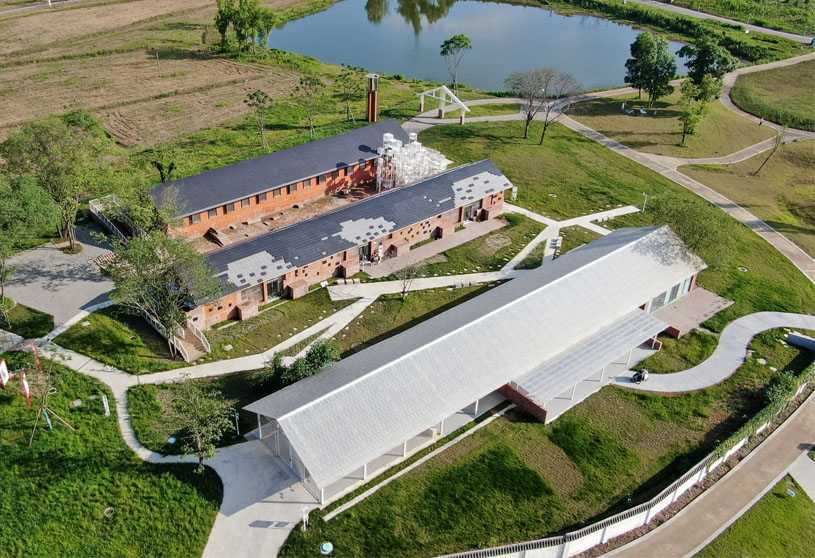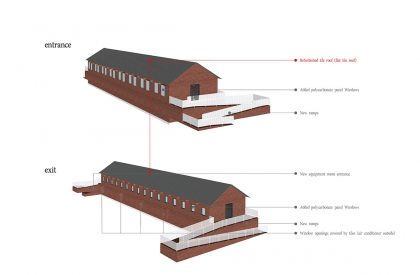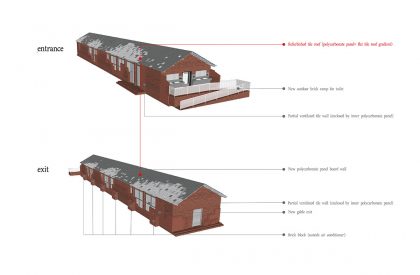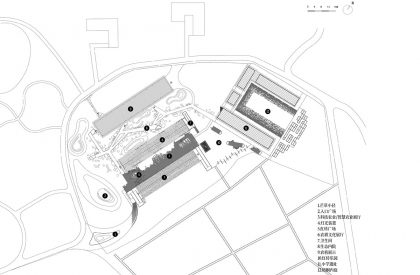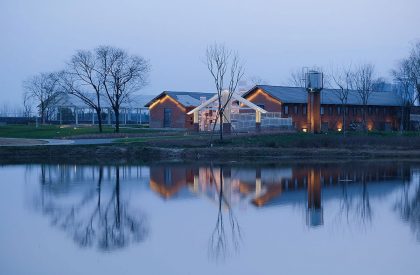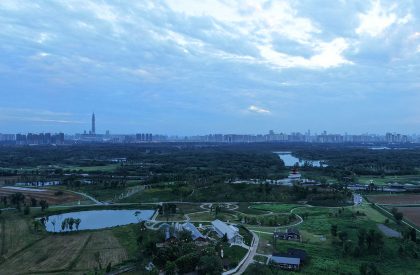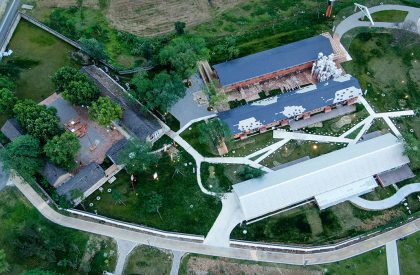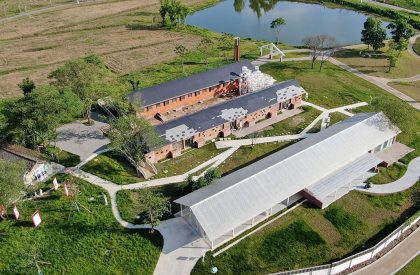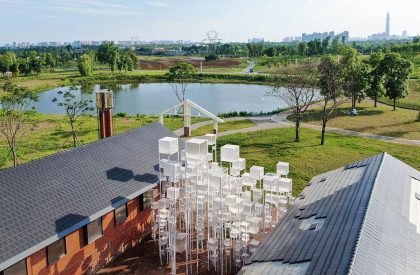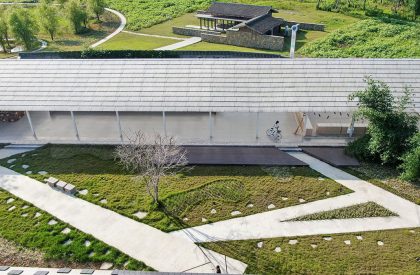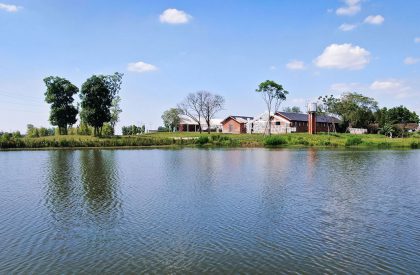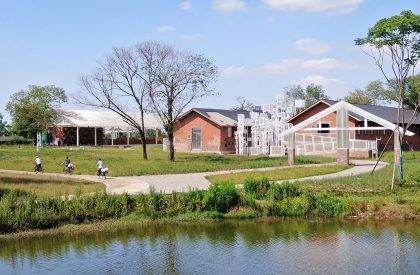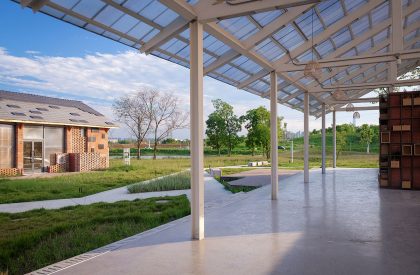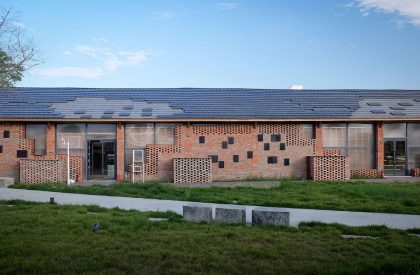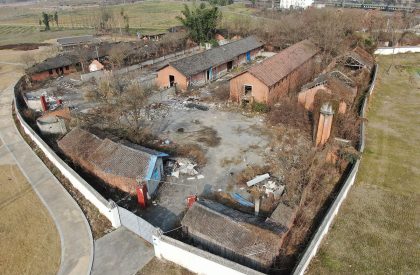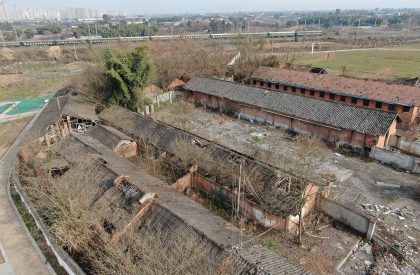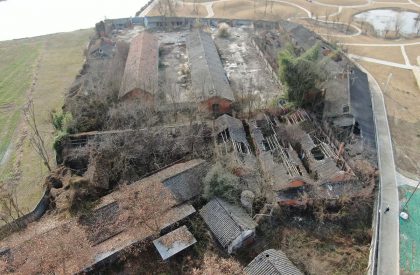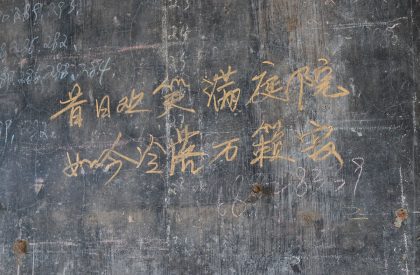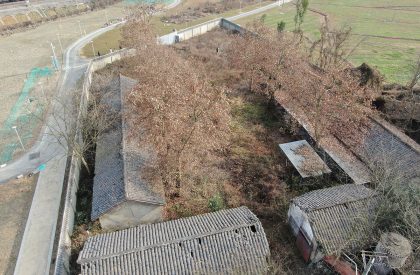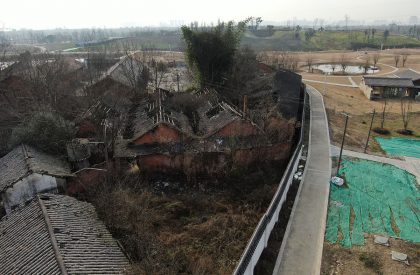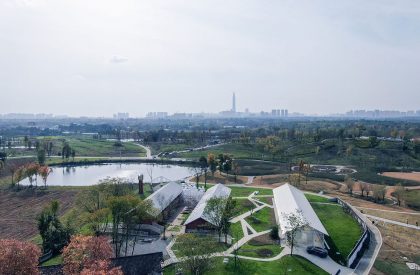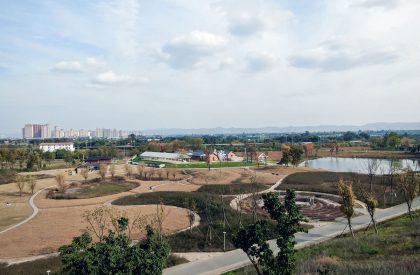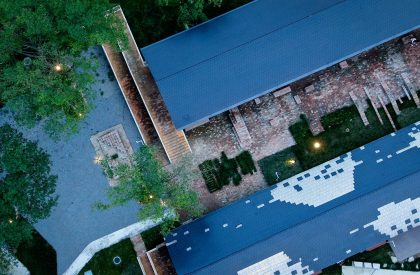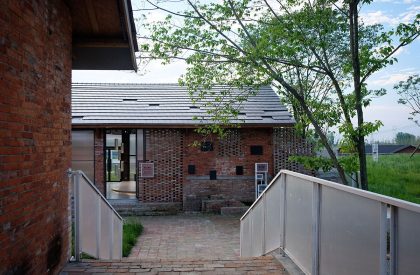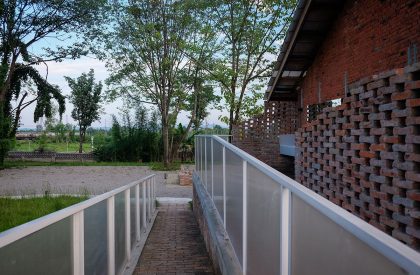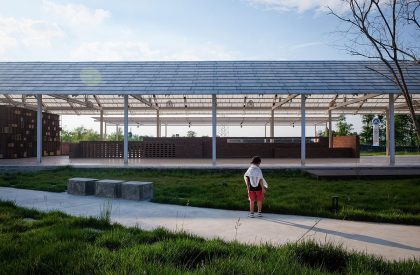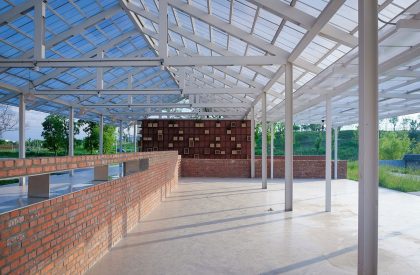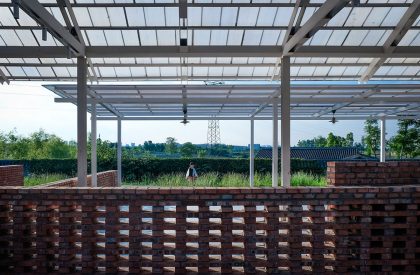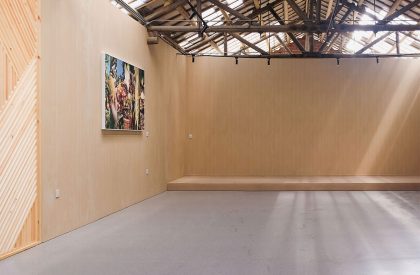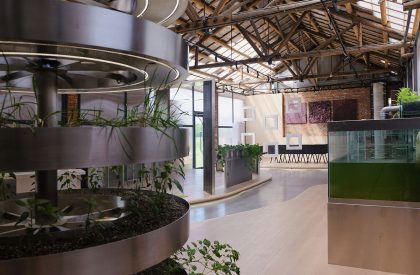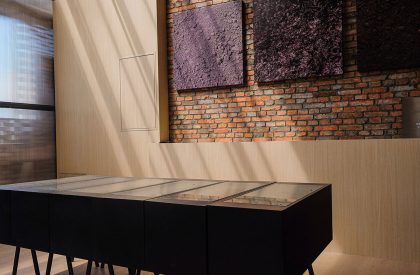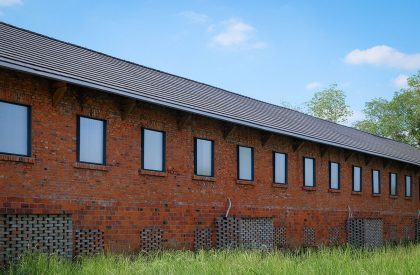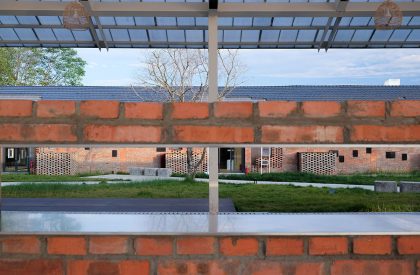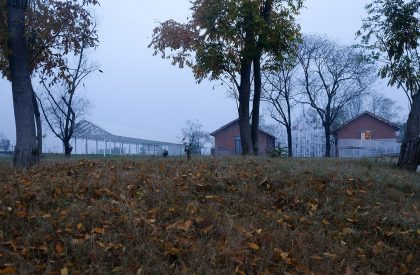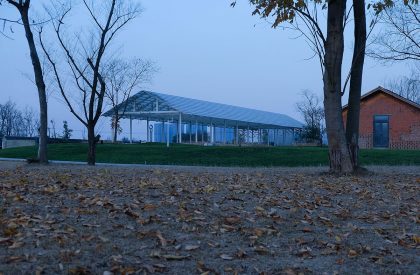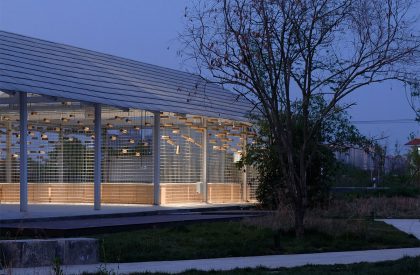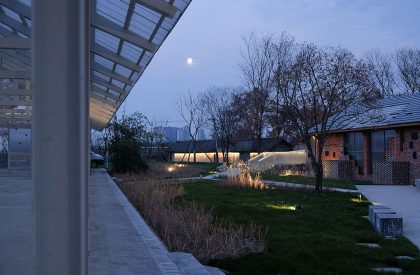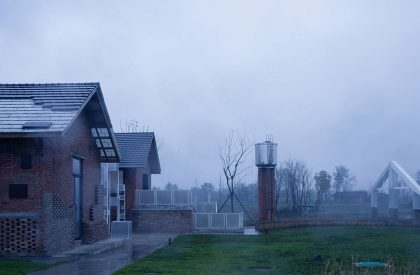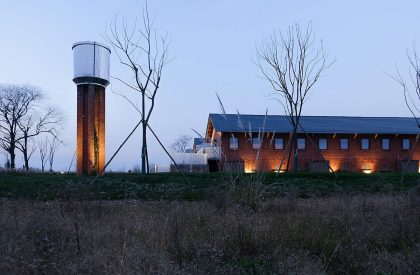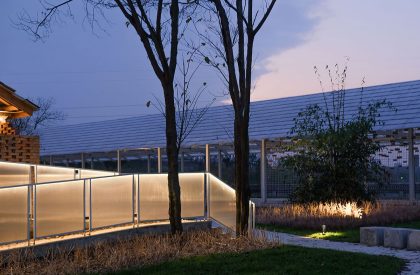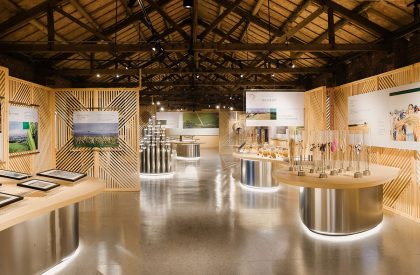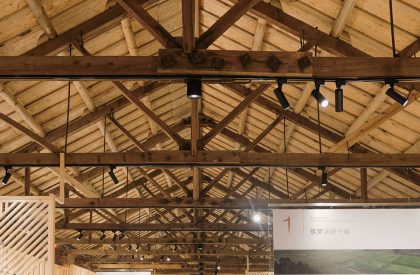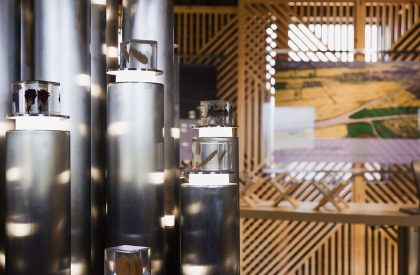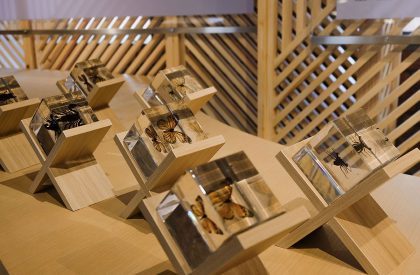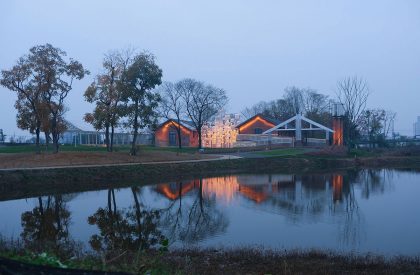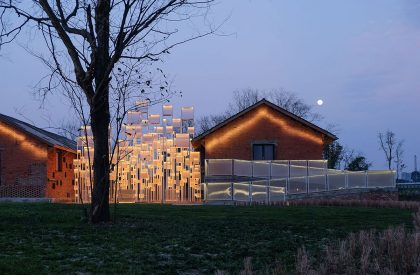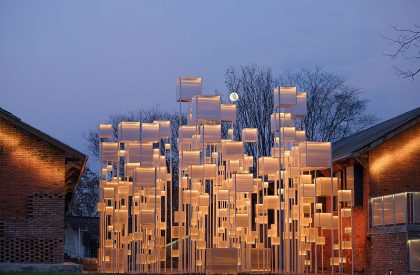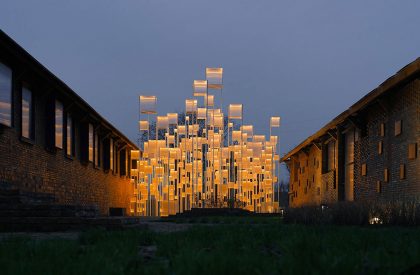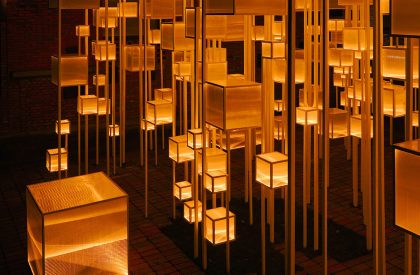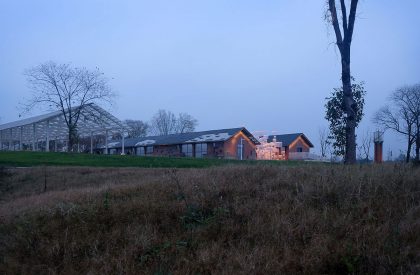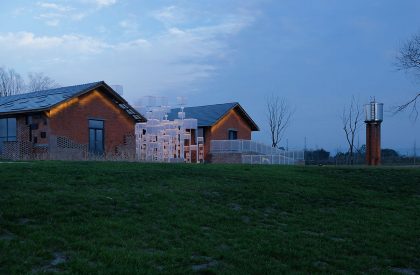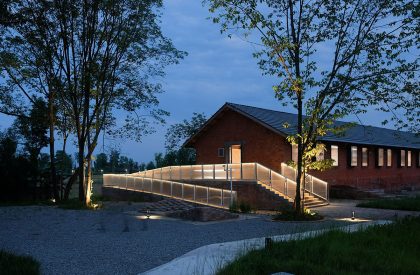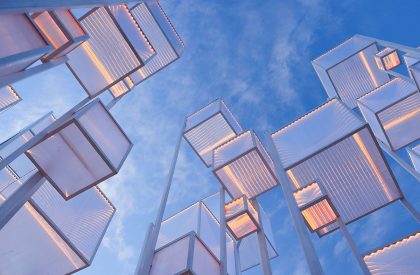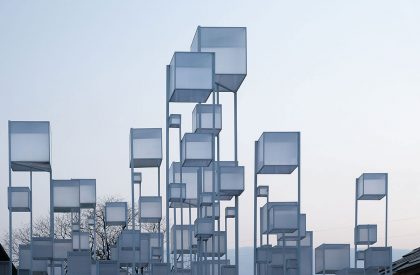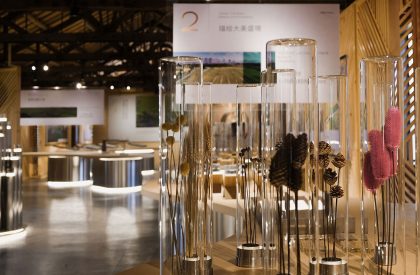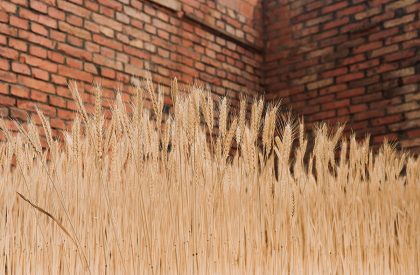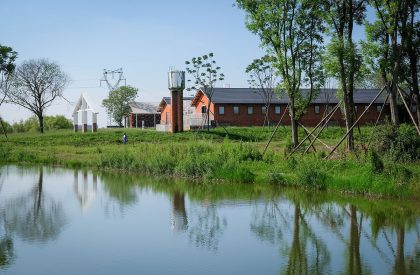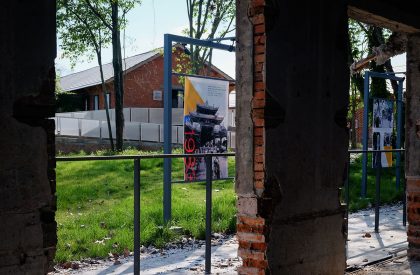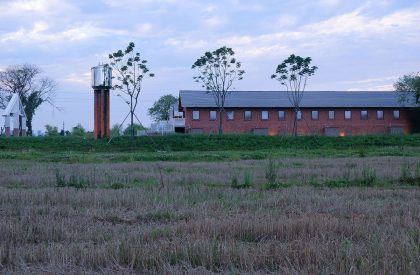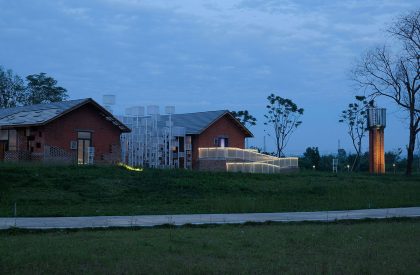Excerpt: Floating Seeds of Qinglong Lake is a revitalization public project executed by the architectural firm Archemit. The frozen architecture also flows in time, and the method comprises the site’s history. During this period, architects sought a balance between the past and the present and handed over the answer to the future. Through the extraction of farm crop growth status as design elements, adopting the standard materials such as polycarbonate panels, ceramic tile, and red brick, make construction presents a new era, the free flow of breath.
Project Description
[Text as submitted by Architect] All things flow in time, and the process of flow forms history. The frozen architecture also flows in time, and the method comprises the site’s history. During this period, architects sought a balance between the past and the present and handed over the answer to the future. Chengdu City Ecological Park · Agricultural Science Popularization and Education Base are located in the second phase of Chengdu Qinglong Lake Wetland Park.
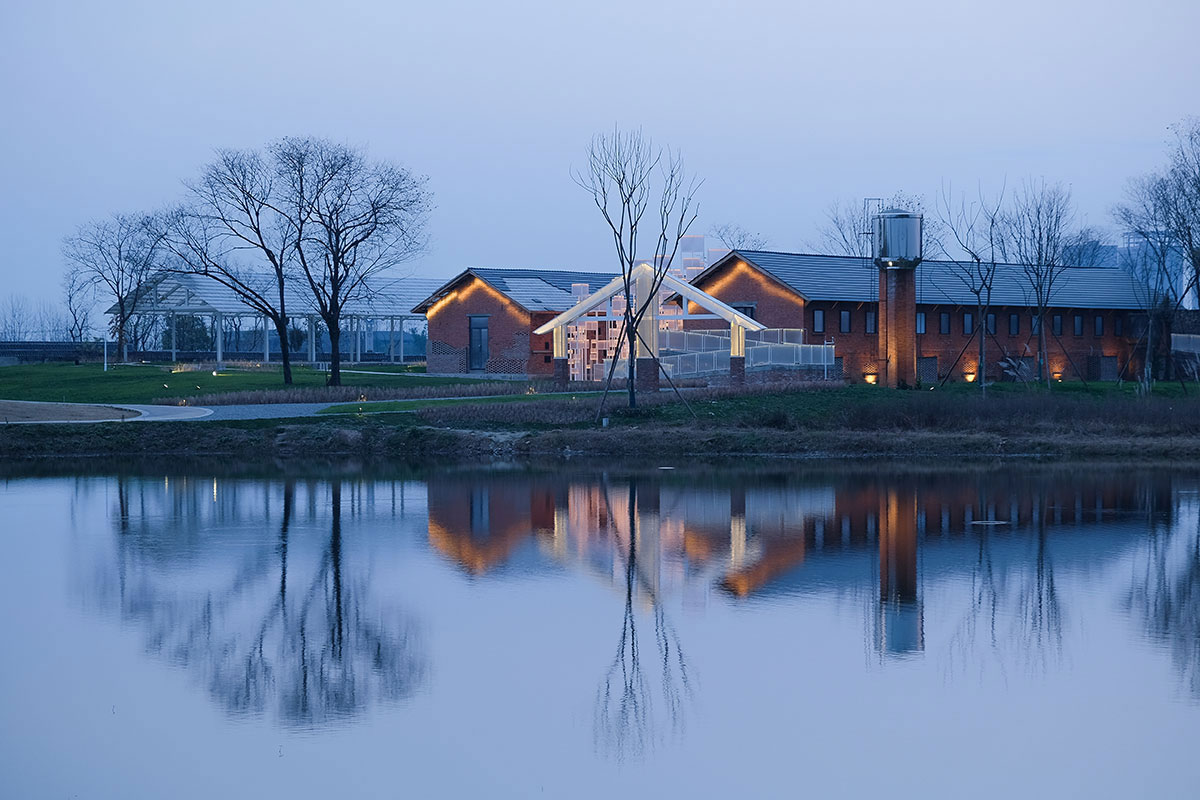
The owner has entrusted Archermit to transform the original building into an agricultural science popularization and education base for visitors. The original buildings are the abandoned Qinglonghu Primary school and a breeding farm, typical of red brick houses. As the site has been planned as a wetland park, the abandoned buildings urgently need to change their identity to welcome visitors to the park. We look forward to making the decaying red brick house glow with new vigour and vitality through the power of design.
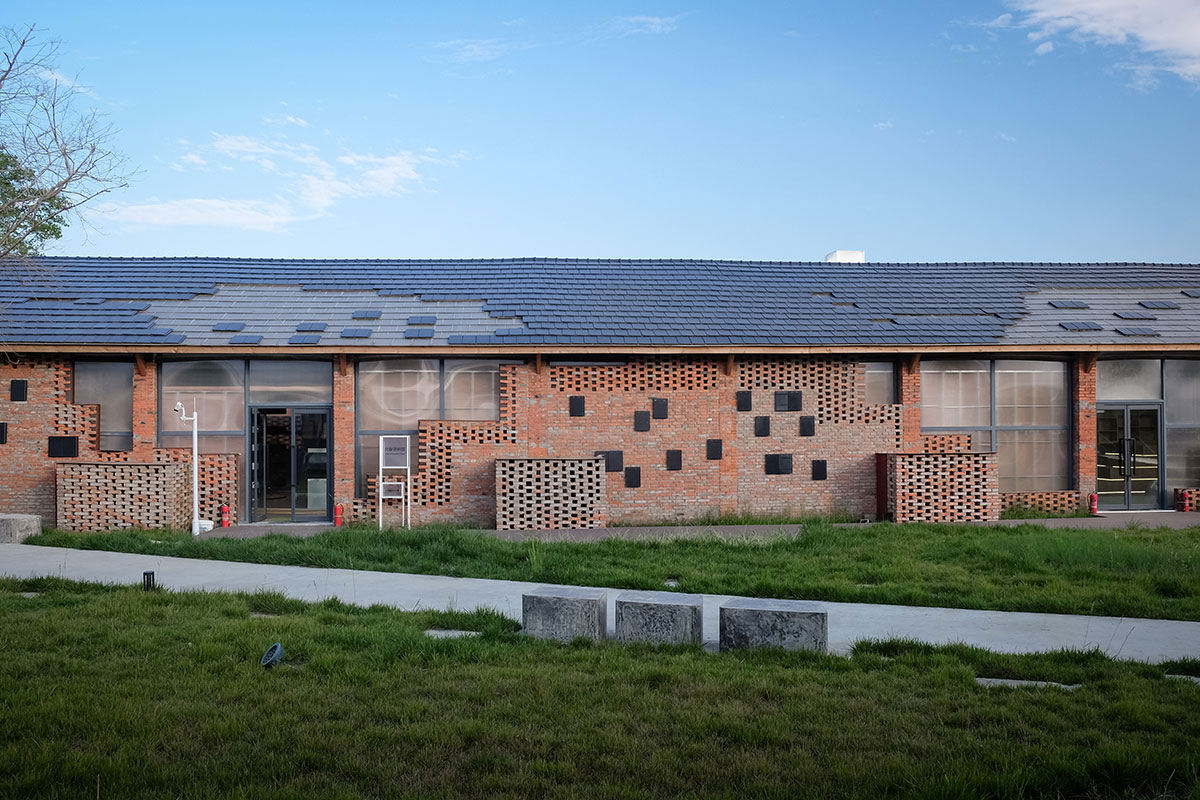
Analyze
In 2018, Chengdu’s “park city” proposed new ideas and a new urban development model. Chengdu rearranged the city space around the Chengdu beltway. “Green belt” goes through 78 bridges connecting the entire 121 gardens and ecological parks around the city, which built a convenient bridge between natural resources and citizen leisure life.

Floating seeds of Qinglong Lake which is located in an ecological park, have space requirements of the science and research experience, in which we take the circulation that everything grows as the architectural image. Through the extraction of farm crop growth status as design elements, adopting the standard materials such as polycarbonate panels, ceramic tile, and red brick, make construction presents a new era, the free flow of breath.

Part of the building walls was damaged, the roof was in disrepair, and part of the structure could not meet the use requirements. Some columns collapsed, walls tilted severely, and there is a tremendous potential safety hazard.
Flow
To give the building a sense of place where the old and the new are alternating and flowing freely, we made the site open to the coming visitors in the renovation design. The original collapsed buildings and red brick walls were removed, and the old red bricks flowed in every corner of the site, changing from vertical wall enclosure to horizontal pavement.
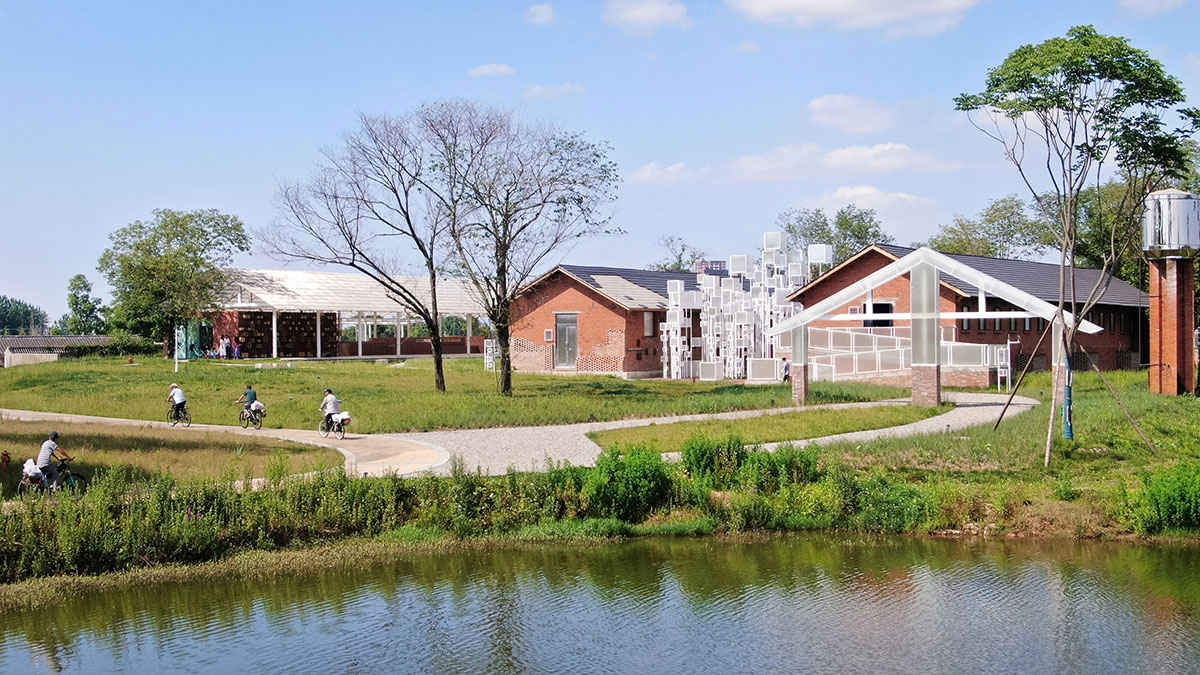

Removed the original enclosed walls of the site open to visitors, attracting tourists from all sides to visit this tour. Based on the site’s memory, we finally chose polycarbonate panels, red brick, terra-cotta tiles and other materials to carry out the targeted transformation of several buildings.
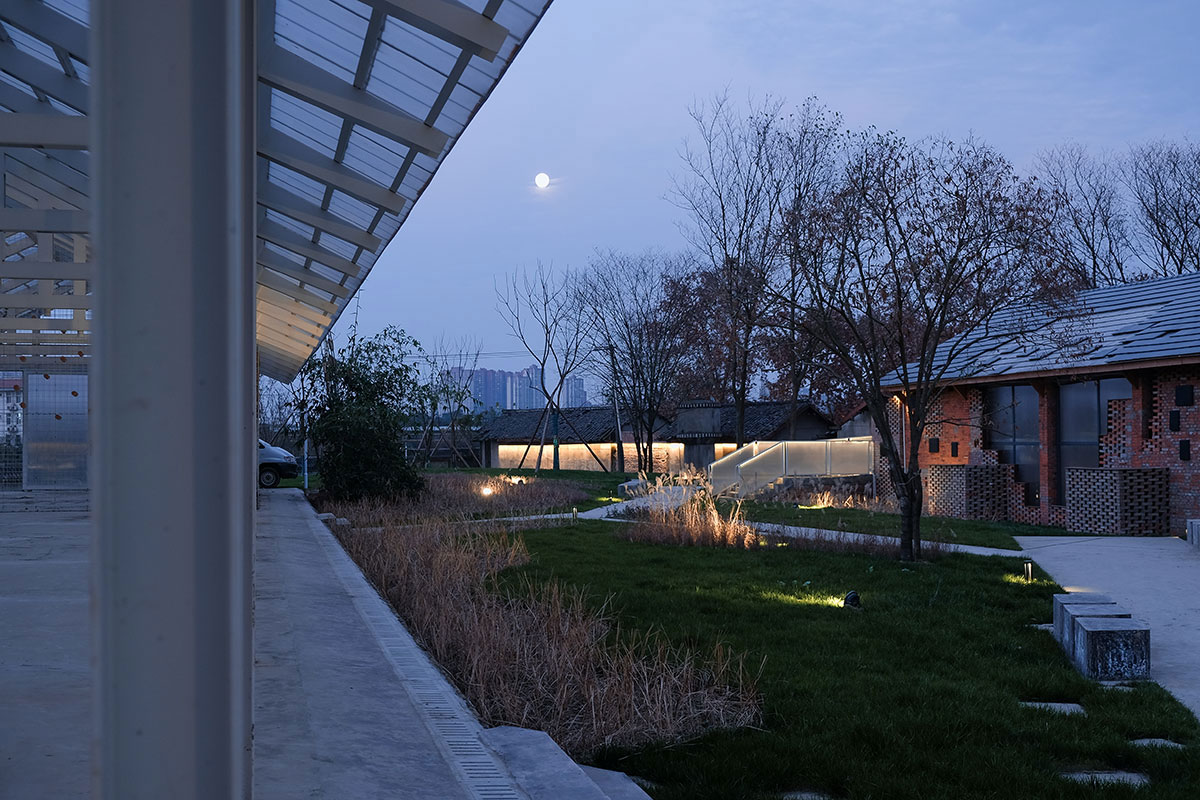
We demolished the collapsed building and built a new agricultural machinery exhibition shed on the site. At the same time, the polycarbonate panel is applied to a part ceiling, wall, doors and windows, giving the building a light and hazy texture, weakening the thick sense brought by red-brick masonry, making the building present a state of integration of old and new.
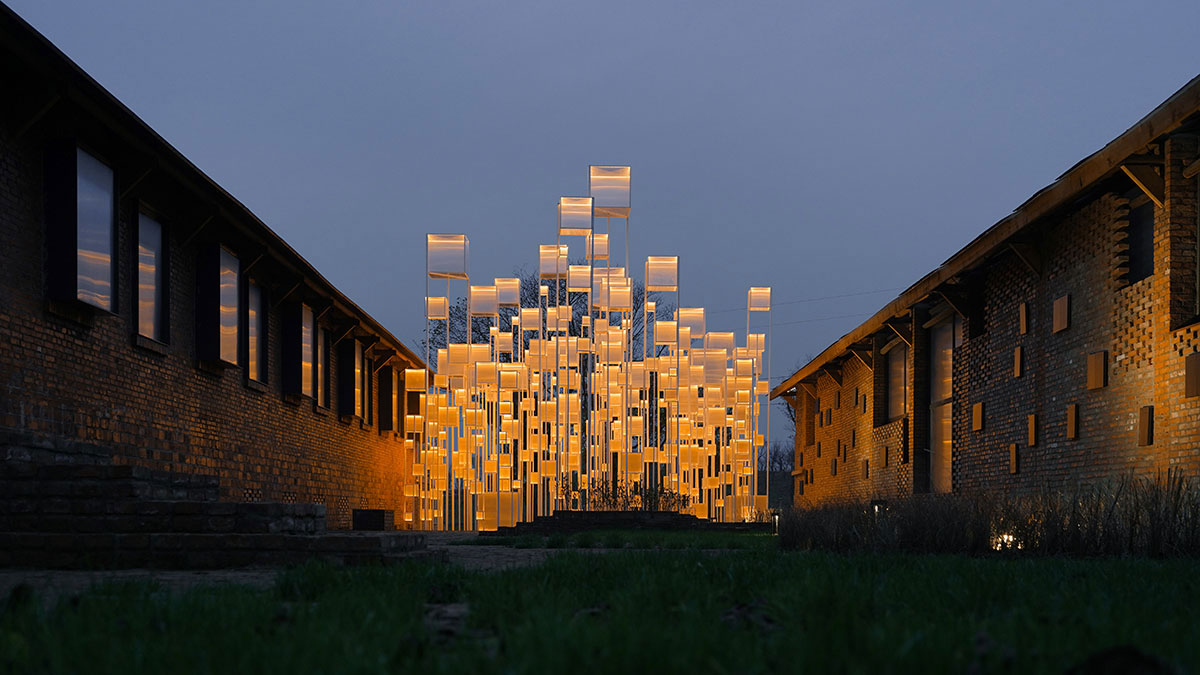
We used steel and polycarbonate panels between the two old buildings to create a set of transparent cubes of varying sizes suspended in the air, in the image of seeds and Kongming lanterns, as the visual focus of the site. The warm yellow light came through the polycarbonate board box at night, bringing a bright floating feeling, like Kongming lanterns frozen in the sky.
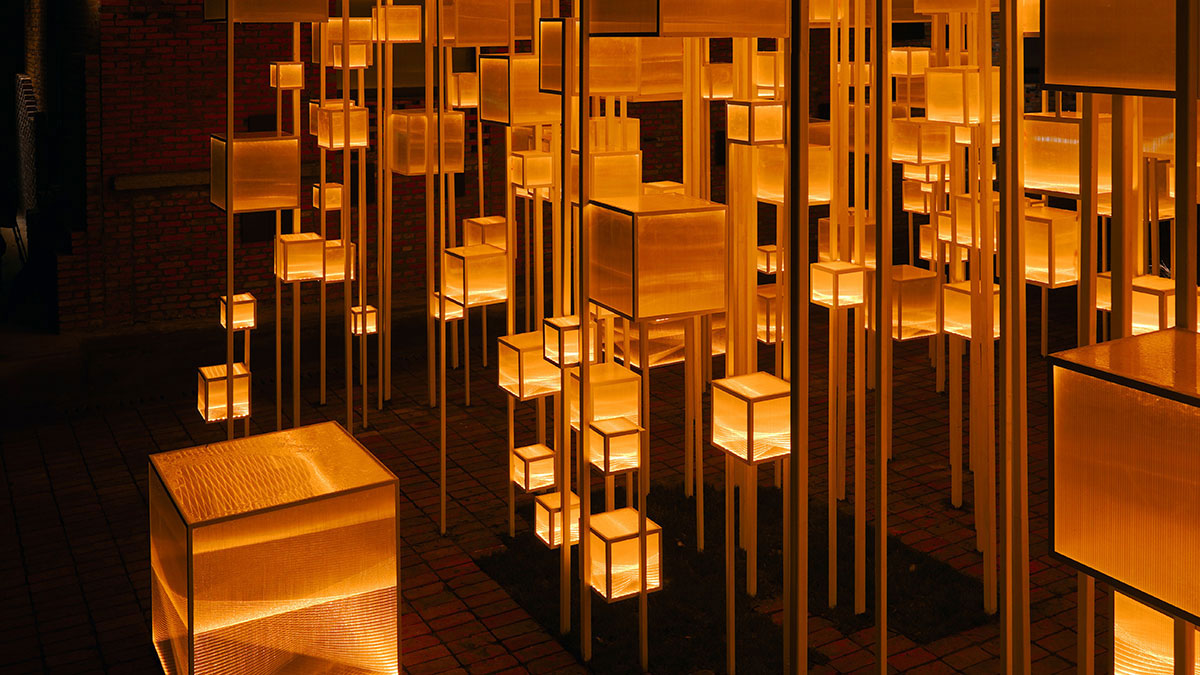
The historian Di Wang believes that history and culture are the souls of a city. Making this soul survive the impact of modernization, commercialization, and technology is a challenge that city managers, scholars, and residents should address. At the same time, this is also an issue that architects should focus on when facing urban renewal projects.
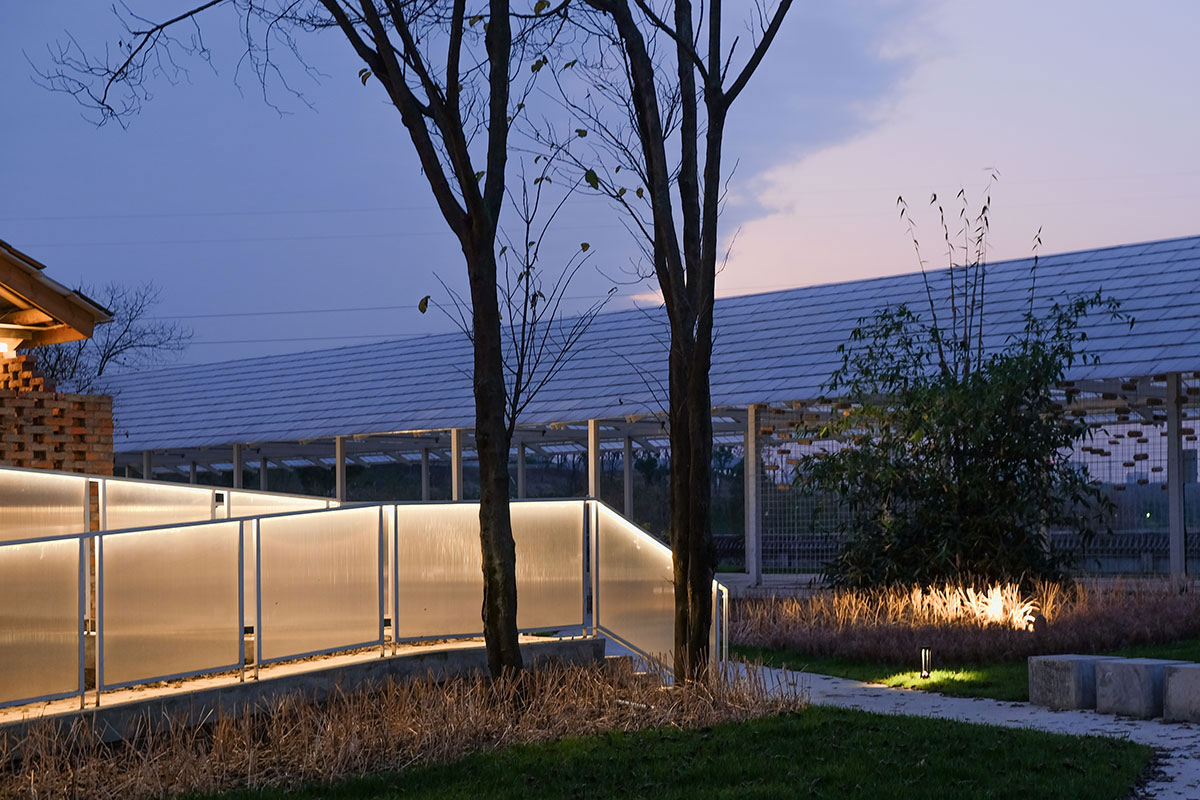
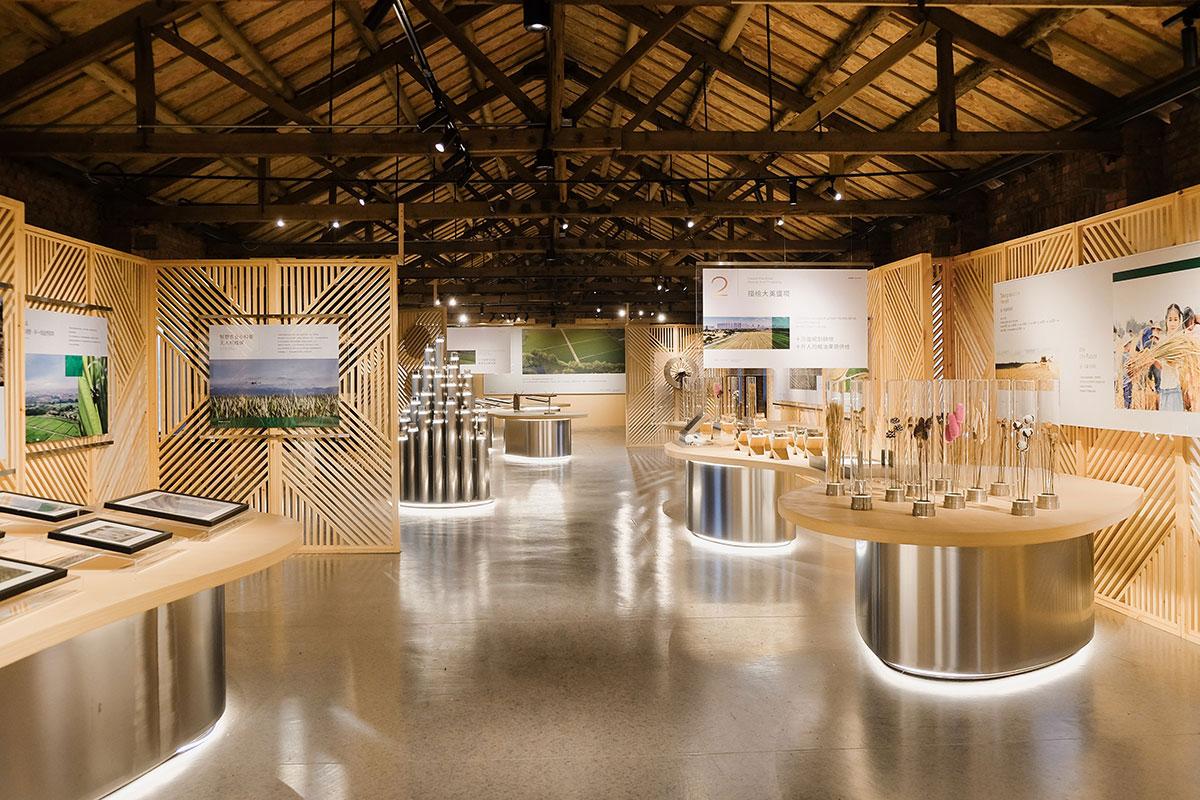
In our opinion, when carrying out this kind of renovation project, attention should be paid to distinguishing the similarities and differences between “old”, “broken”, and “dilapidated”. After determining the three differences, different strategies can be adopted in the face of the separate old building. In the face of irreversible urbanization, architects should think more about humanity.
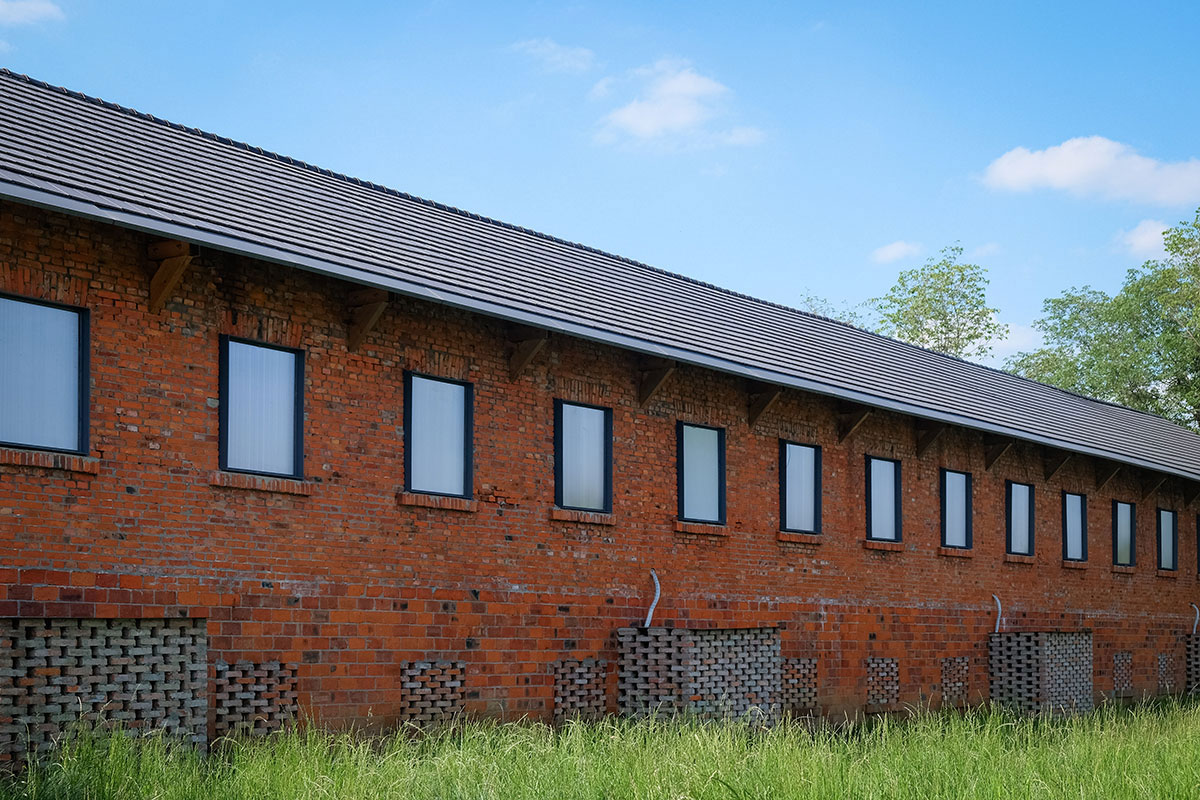
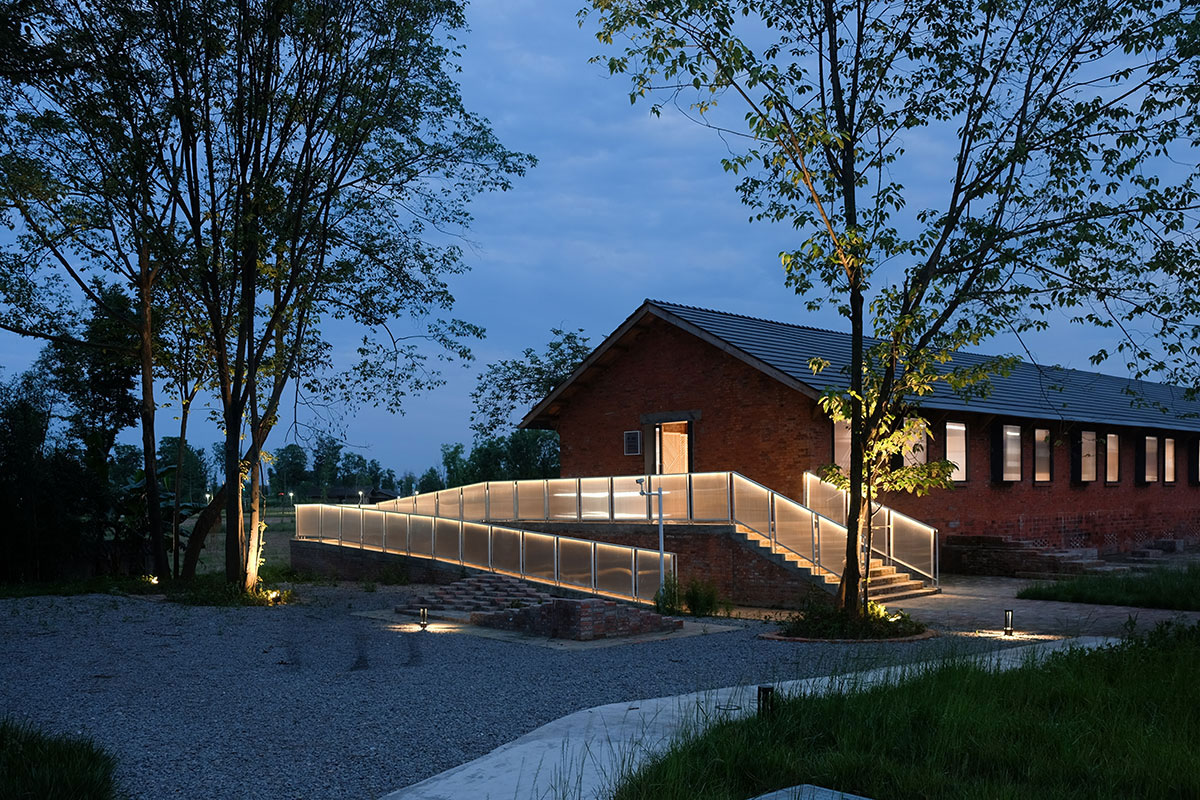
Architecture is never just architecture itself. It’s thickened not only art but also an epic written with wisdom and passion. The floating seeds of Qinglong Lake are tiny seeds we planted in the urban renewal process. We hope these “Floating seeds” can express our attitude and think about urban renewal. We also hope that this can arouse more urban participants to think about the city they live in.
